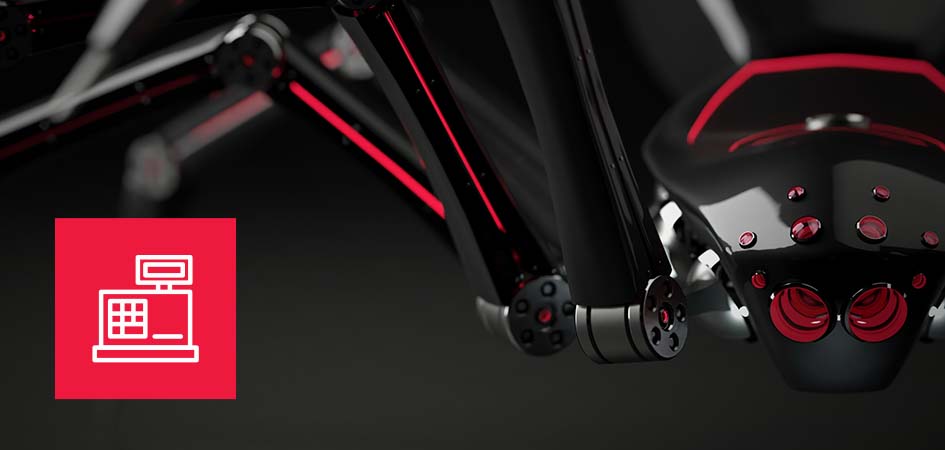Trustwave Threat Intelligence Briefing: The 2023 Retail Services Sector Threat Landscape

Trustwave Research Reveals Cybersecurity Risks Threatening Patient Lives in Healthcare. Learn More
Get access to immediate incident response assistance.
Get access to immediate incident response assistance.
Trustwave Research Reveals Cybersecurity Risks Threatening Patient Lives in Healthcare. Learn More

The holiday shopping season is teed up for its annual explosion of spending. Retailers know this, consumers know this, cybercriminals know this, and are unfortunately ready to take advantage of any weak link that can be found to steal vital consumer and business data.
However, unlike gift buyers heading to stores or shopping online on Black Friday and Cyber Monday, these adversaries are not seasonal actors. The danger facing the retail sector is year-long and growing, as revealed in the just-released Trustwave Threat Intelligence Briefing: The 2023 Retail Services Sector Threat Landscape.
Trustwave SpiderLabs analyzed the threat actors active in attacking the retail sector, including Royal, Bian Lian, LockBit, Clop, BlackCat, Play, 8BASE, and RasomedVC.
These groups have a deep arsenal of well-tried hacking tools at their disposal to gain access, move laterally inside their target, and then exfiltrate data. The most prevalent tactics are email-borne malware, phishing, BEC, and vulnerability exploitation, among others.
As always, the driving factor behind attacks on retailers is the massive repository of extremely valuable data held by these organizations. Threat actors highly covet consumer credit card and personally identifiable information (PII) as criminals can quickly and easily monetize it.
Retailers compile this consumer data while investing significant resources to earn a coveted spot in consumers' minds as household names. The allure of brand recognition is undeniable, but it also presents a stark reality in the realm of cybersecurity: the bigger the brand, the larger the target.
This effort does pay off. The online retail, or e-commerce, market surpassed a staggering $1.09 trillion in 2022, marking a 209% increase from 2019, according to Comscore.
In addition to financial loss due to a data breach or other type of attack, retailers face massive reputational damage, which, in the long run, may prove even more damaging than the attack itself.
Unlike security incidents affecting businesses in less-publicized sectors, a breach involving a major retailer is almost guaranteed to become a headline-grabbing affair. While the average cost of a breach in the retail sector ($2.9 million) is lower than the industry average ($4.4 million), the extensive public awareness of these retail giants, coupled with the loyal customer base they command, can amplify the reputational consequences of any breach.
The Trustwave SpiderLabs' report spotlights five vital business areas that allow retailers to remain profitable, but also offer avenues of attack to threat actors. Here is an abridged version of the findings:
In the same manner that Trustwave SpiderLabs presented its earlier financial, healthcare and hospitality reports, the Trustwave Threat Intelligence Briefing: The 2023 Retail Services Sector Threat Landscape details the most often used attack vectors.
While AI isn’t new, the advances made in Generative AI and Large Language Models (LLMs) are setting new benchmarks for what’s possible for retail organizations and for adversaries and defenders. Organizations need to be aware of privacy issues when using AI for their purposes, while threat actors have found a myriad of uses for this technology.
AI and LLM are a boon for adversaries who attempt to utilize phishing emails to gain access to their targets. Phishing is still the prime method used for gaining an initial foothold, and AI and LLMs that can generate authentic appearing and error free emails make them hard for the recipient to spot.
The SpiderLabs team observed a significant increase in malicious bot traffic during the holiday shopping season which poses a threat to online retailers. These bots engage in various automated threats, including credential stuffing, account takeover, gift card cracking, web scraping, API scraping, fake account creation, and inventory scalping. The two types most often used are nicknamed Grinchbots and Freebie Bots.
Bot attacks can potentially slow down or even disrupt online operations of retailers by simulating consumer actions, leading to an overwhelming increase in website traffic. These bots extract pricing information, exploit promotions, and carry out fraudulent transactions, impacting online retail significantly. This increased bot activity may raise operational costs, affecting website resources, marketing, technical support, and even cause financial losses through fraud.
As with many sectors, the retail industry is increasingly reliant on third-party vendors for a variety of services, such as point-of-sale systems, payment processing, supply chain management, and customer relationship management.
Cybercriminals commonly prefer to attack these third parties as a flanking maneuver—if the attack succeeds, they gain access to the targeted company’s data. Perhaps more importantly, these aforementioned third parties pose a grave risk to retail organizations because of the large dependency of these organizations on third-party software and vendors for day-to-day operations. Recent supply chain headlines, like SolarWinds and 3CX, underscore the exposure that third-party vendors can create for retail organizations.
In a world where the retail sector faces constant cyber threats, the Trustwave SpiderLabs 2023 Retail Services Sector Threat Landscape report paints a vivid picture of the challenges ahead.
The reputation of major retailers, coupled with loyal customer bases, only amplifies the consequences of breaches. As retailers navigate e-commerce, supply chain vulnerabilities, seasonality, omnichannel strategies, gift cards, and franchise models, they must also contend with emerging threats like AI-driven phishing, malicious bots, and third-party vulnerabilities.
Vigilance and robust cybersecurity measures are essential to protect both business and consumer interests in this ever-evolving threat landscape.
Trustwave is a globally recognized cybersecurity leader that reduces cyber risk and fortifies organizations against disruptive and damaging cyber threats. Our comprehensive offensive and defensive cybersecurity portfolio detects what others cannot, responds with greater speed and effectiveness, optimizes client investment, and improves security resilience. Learn more about us.
Copyright © 2025 Trustwave Holdings, Inc. All rights reserved.